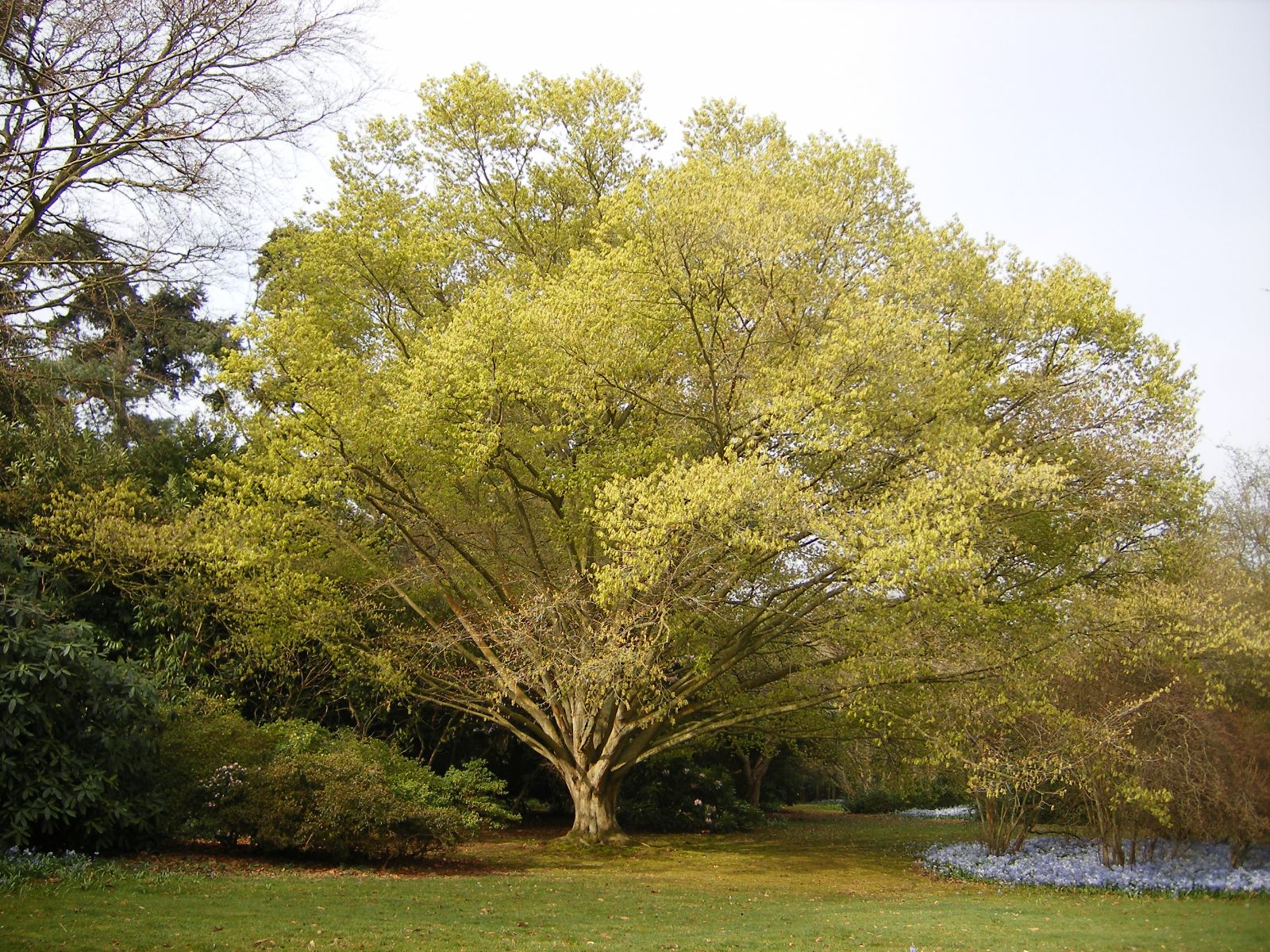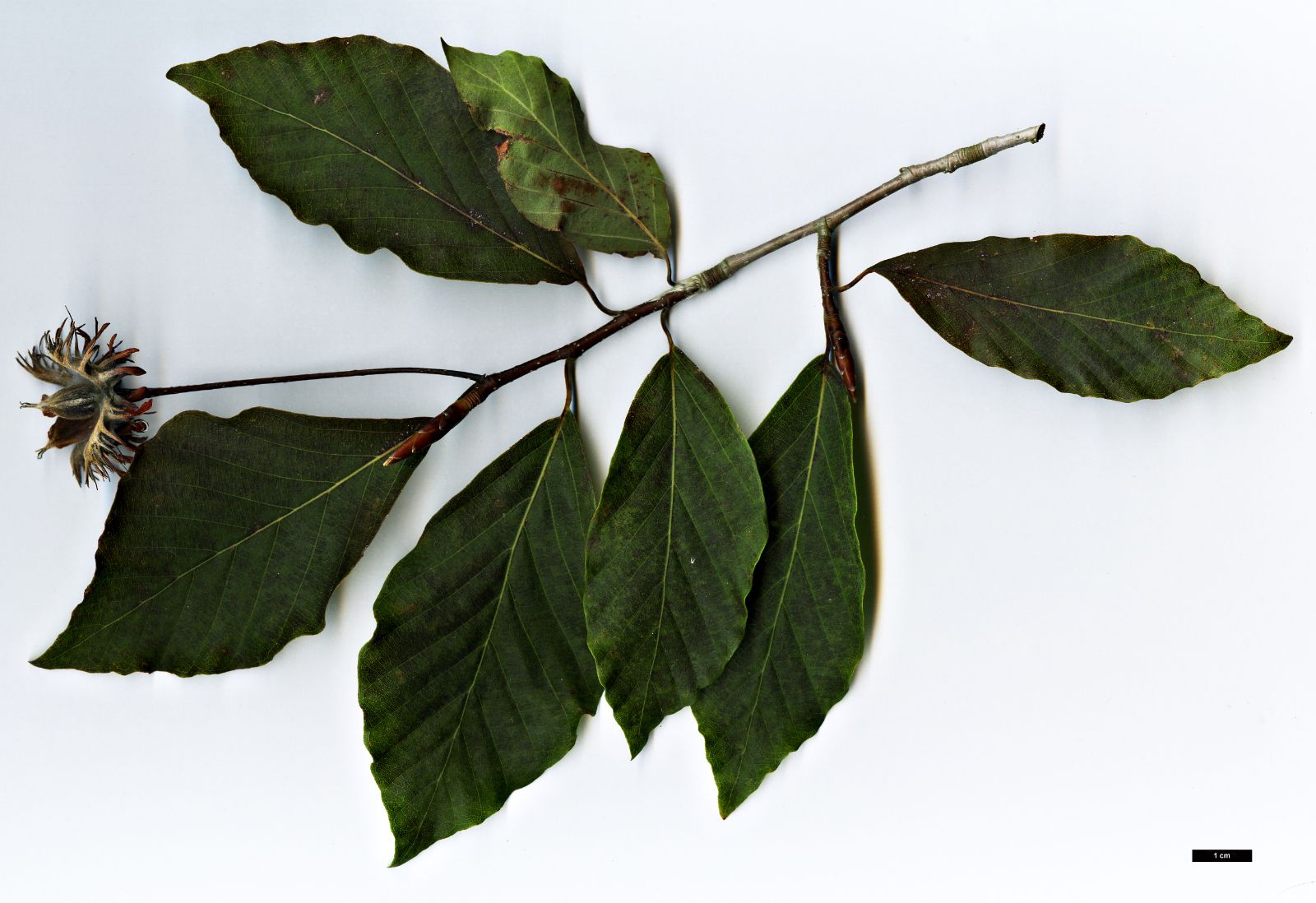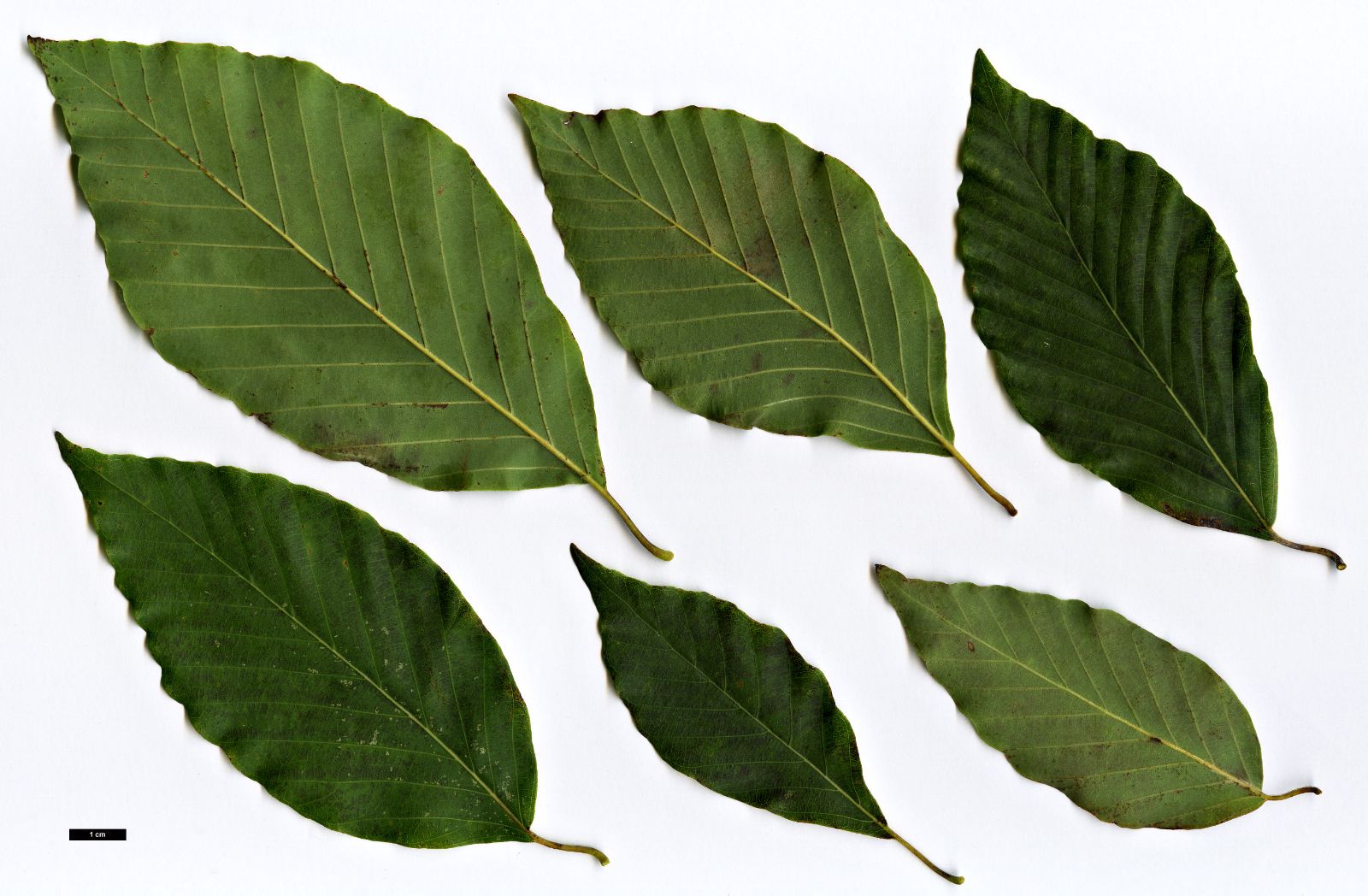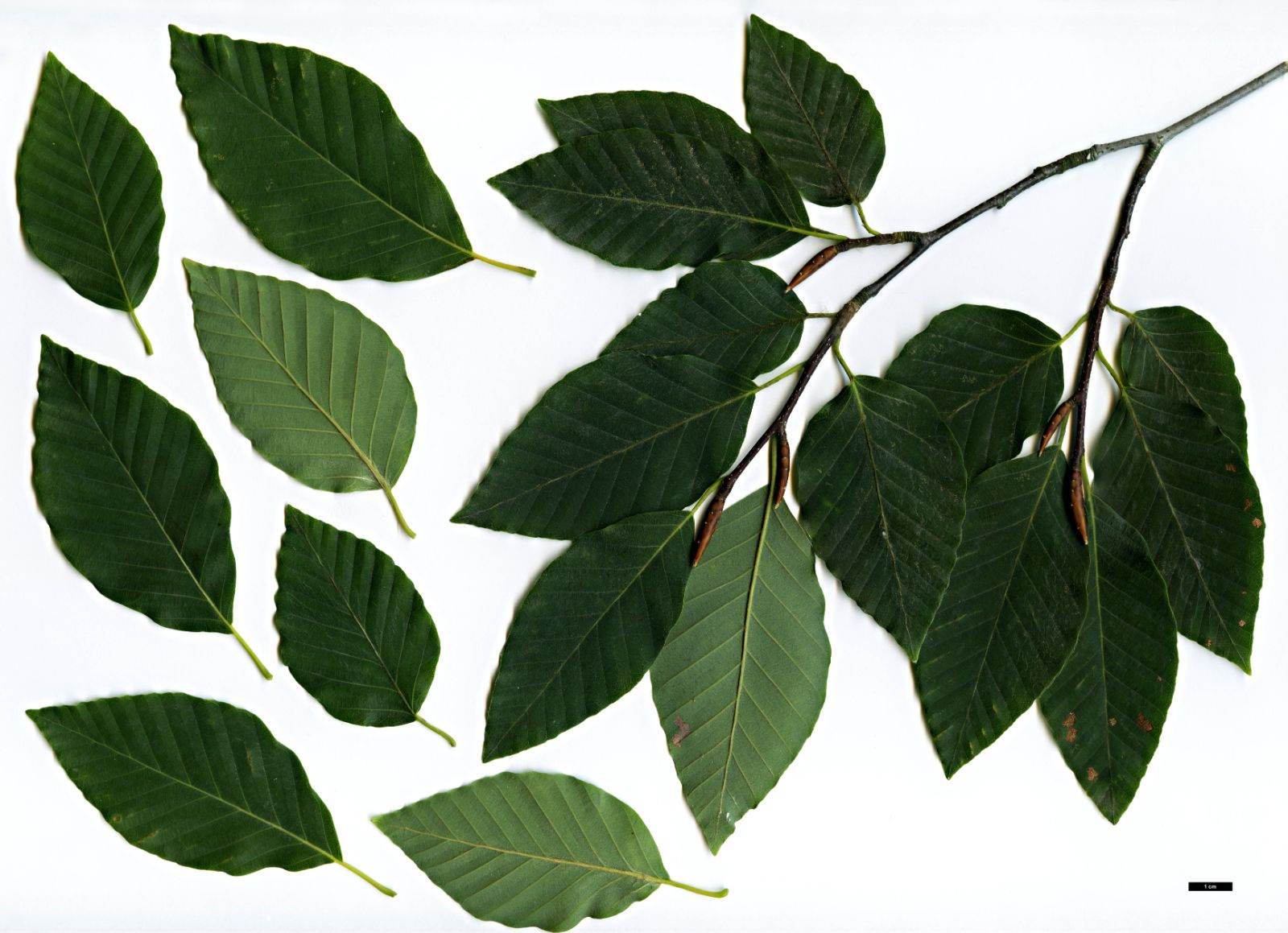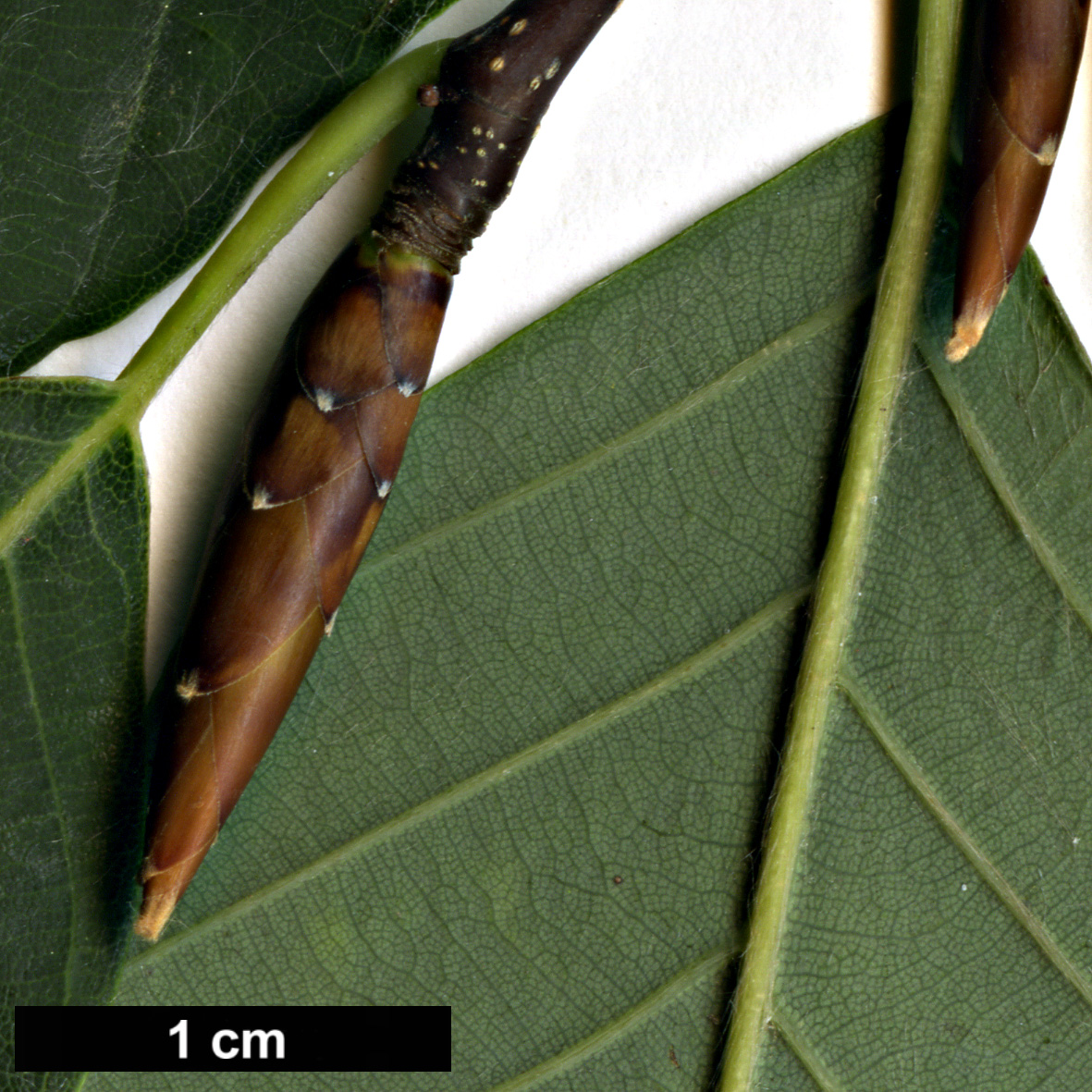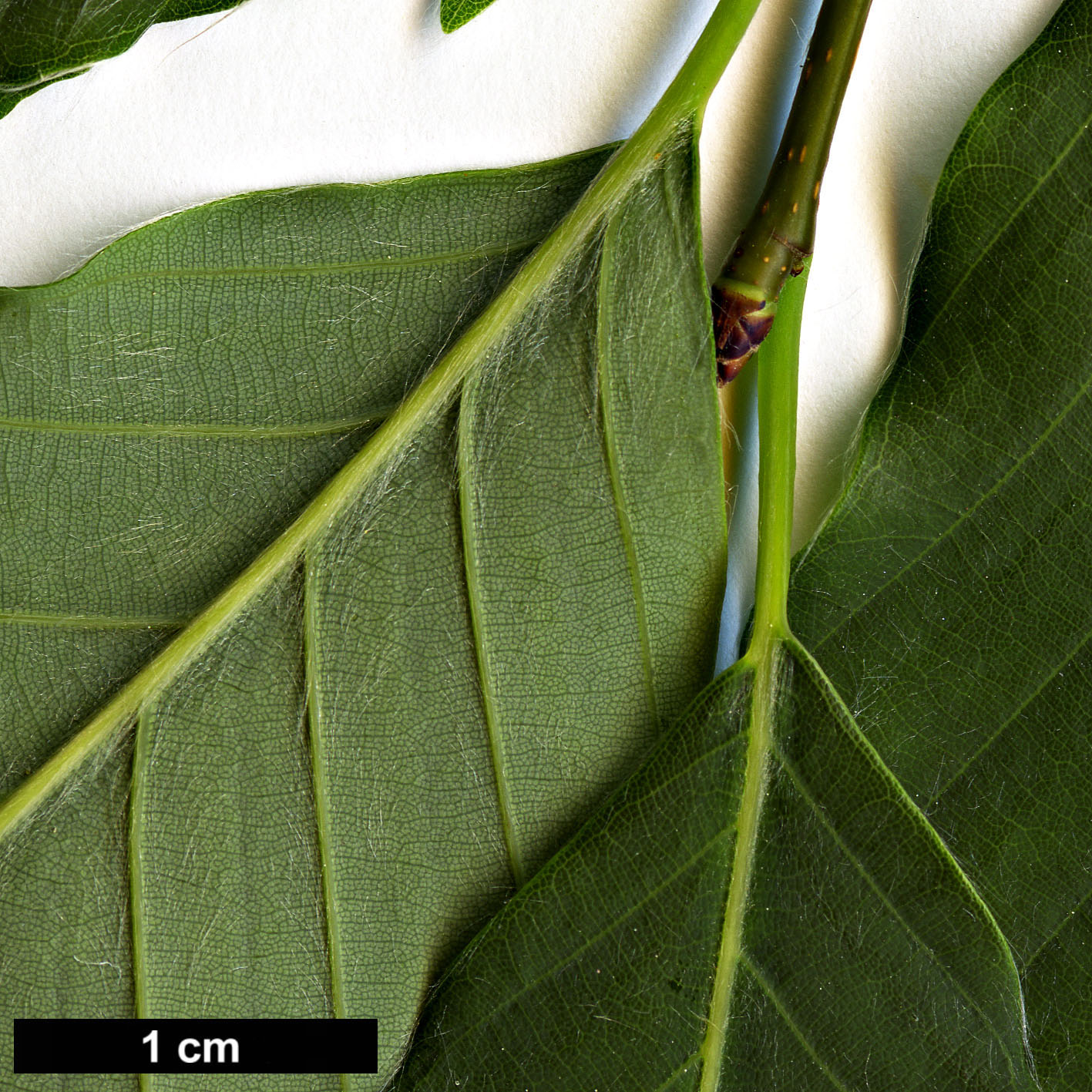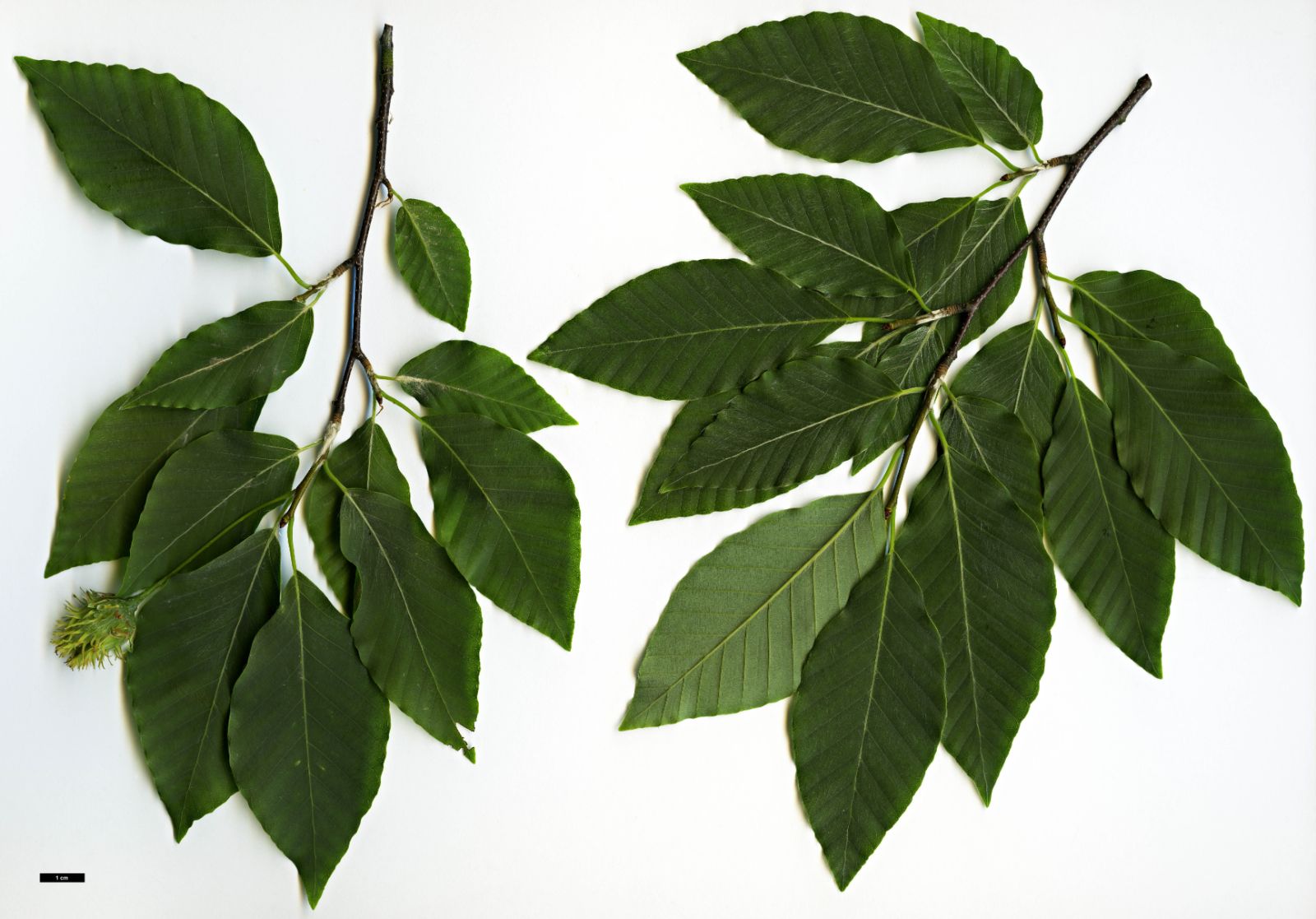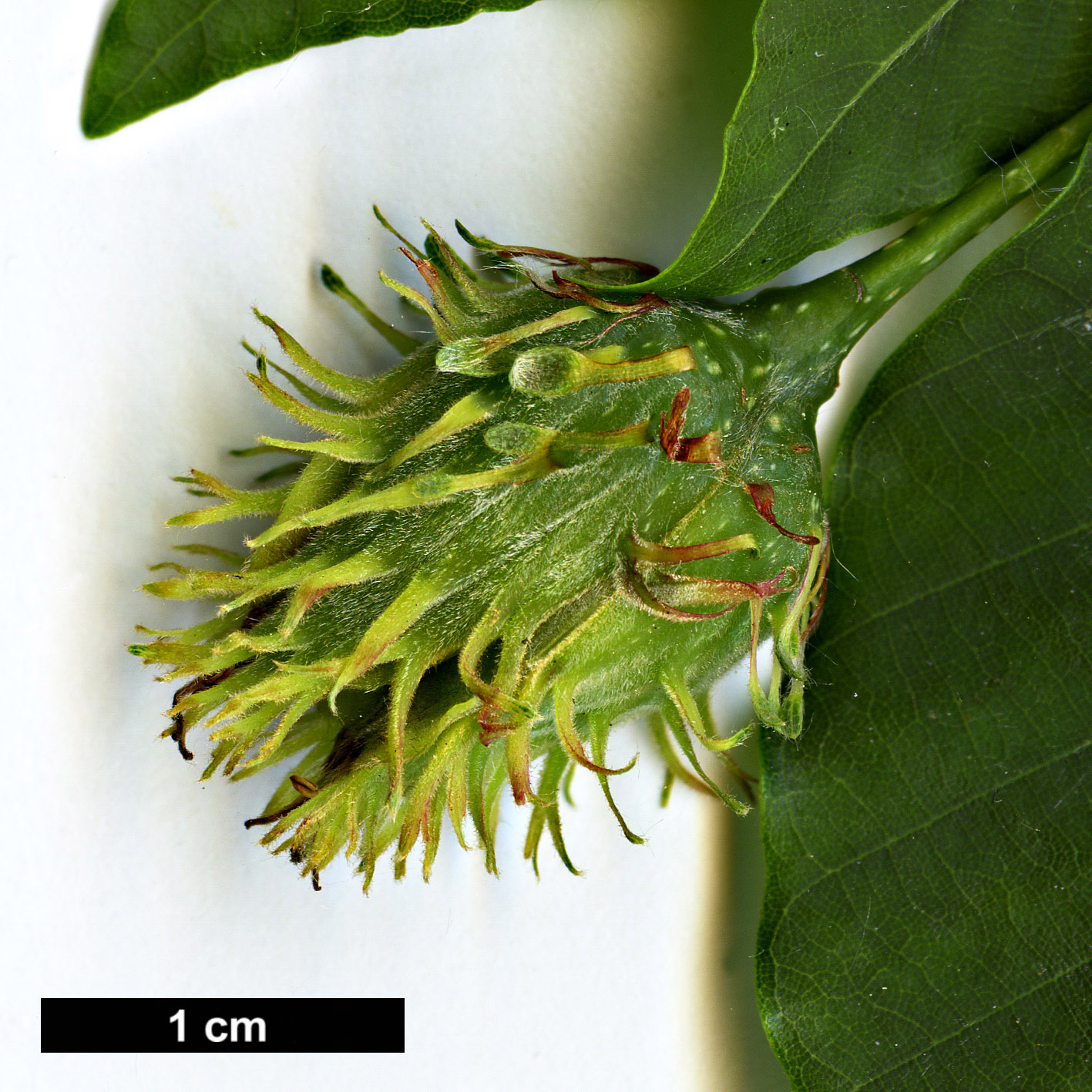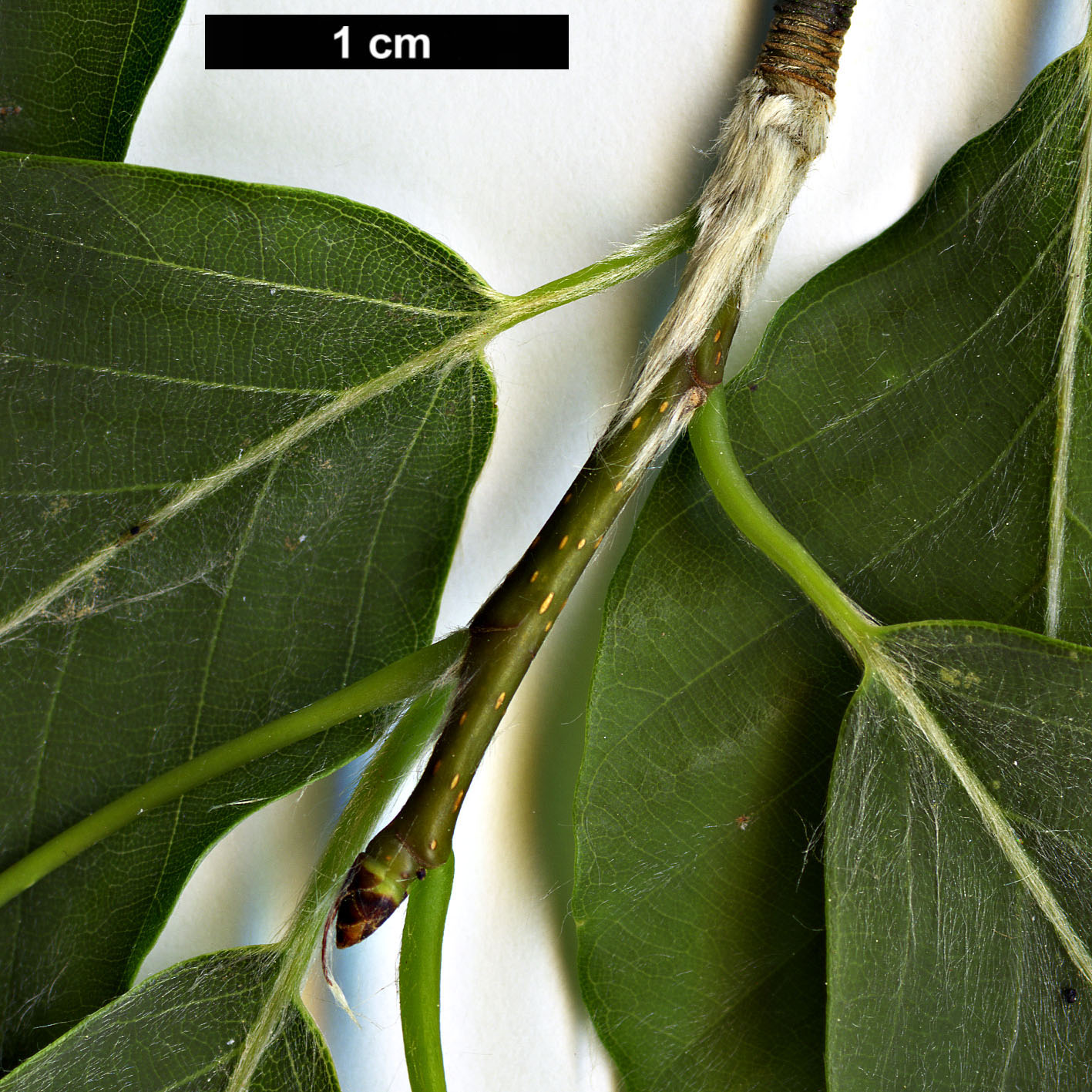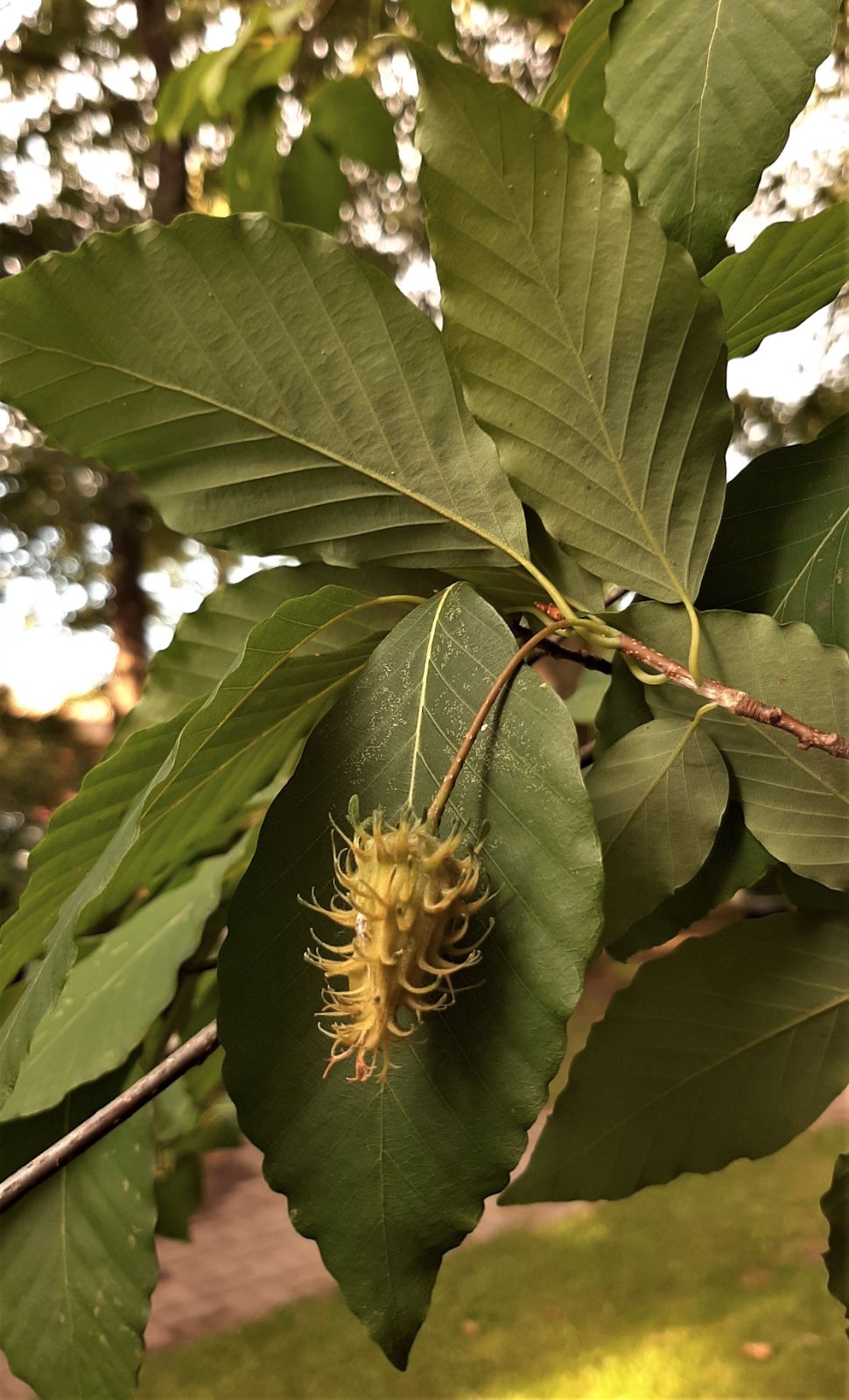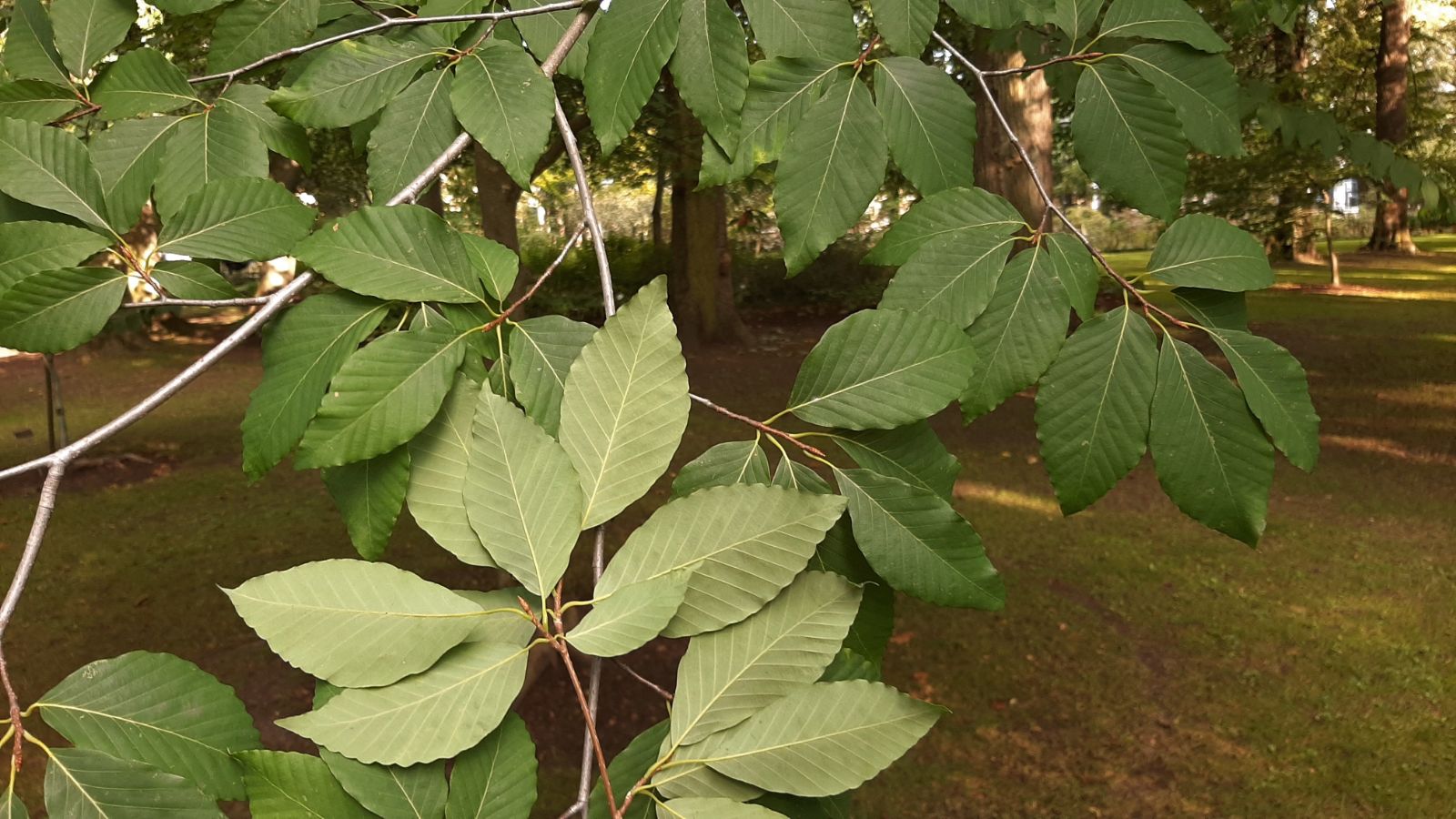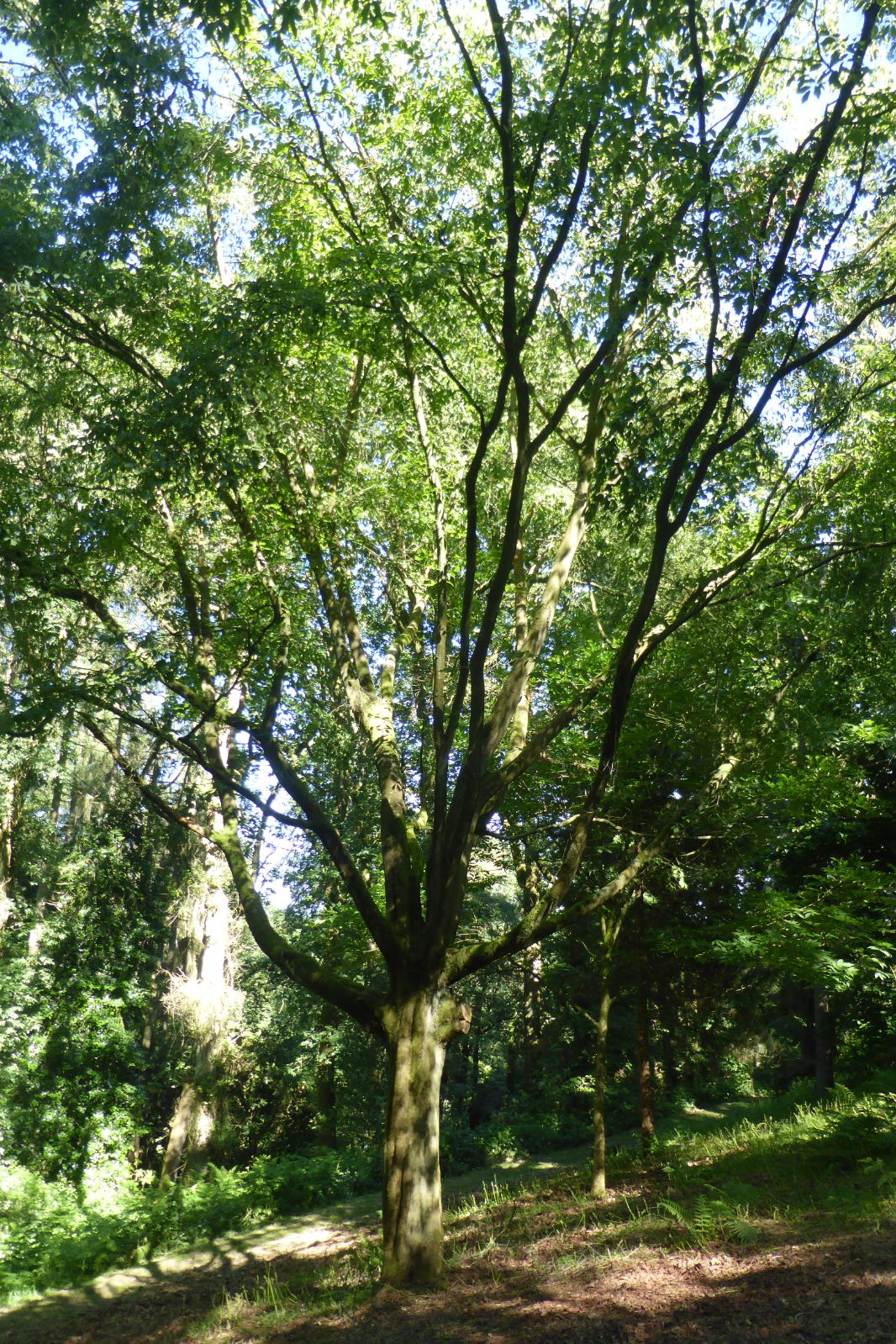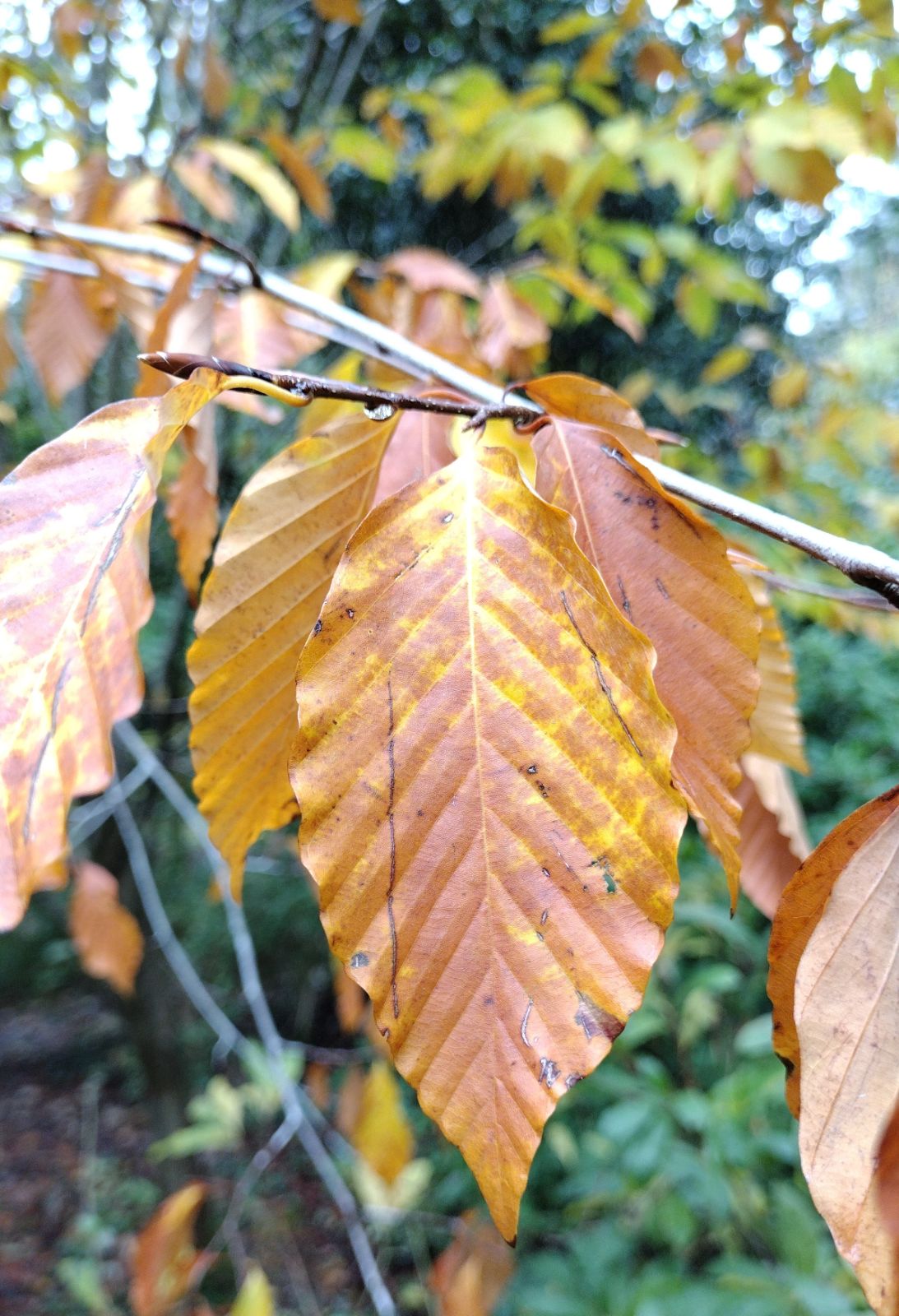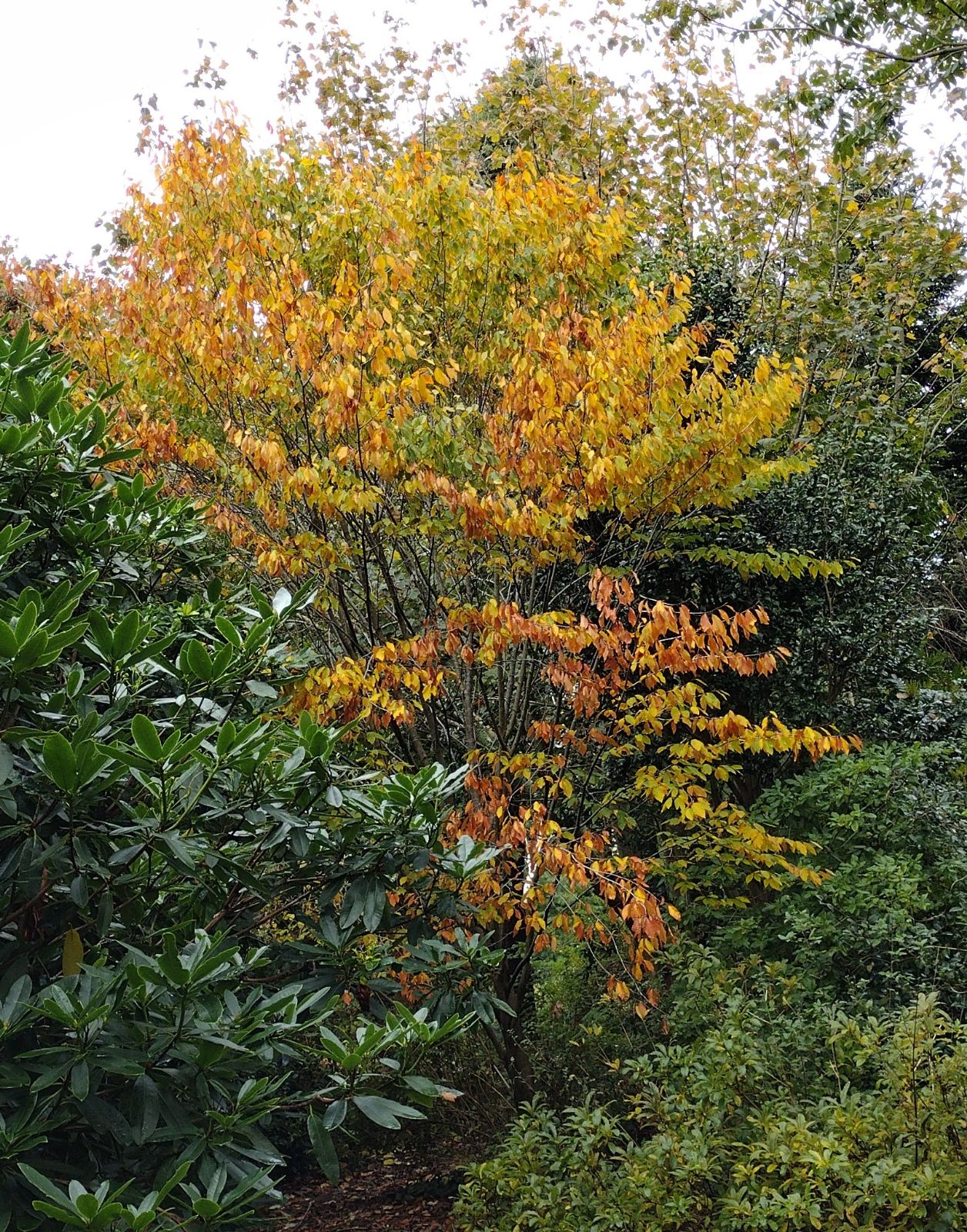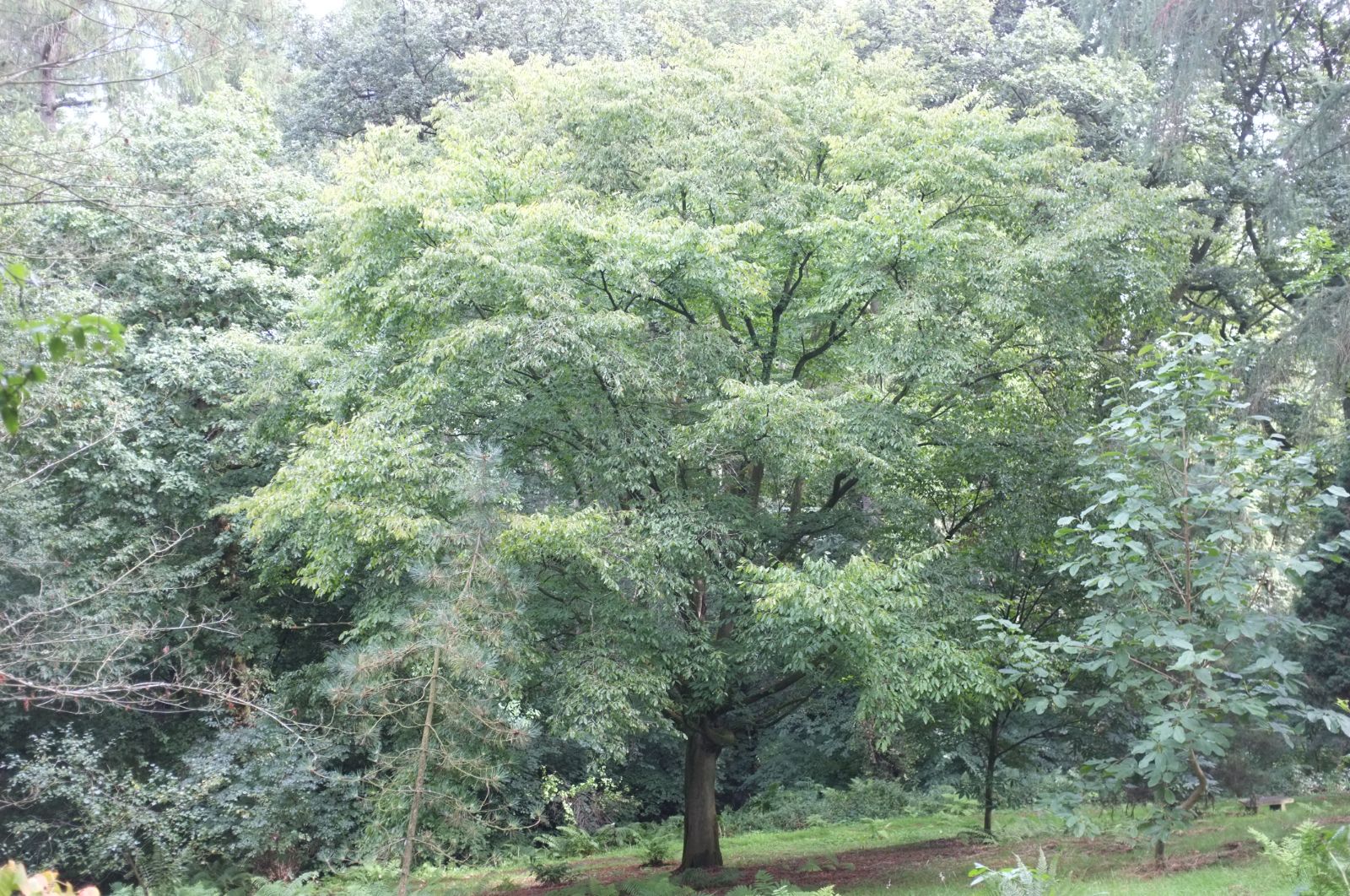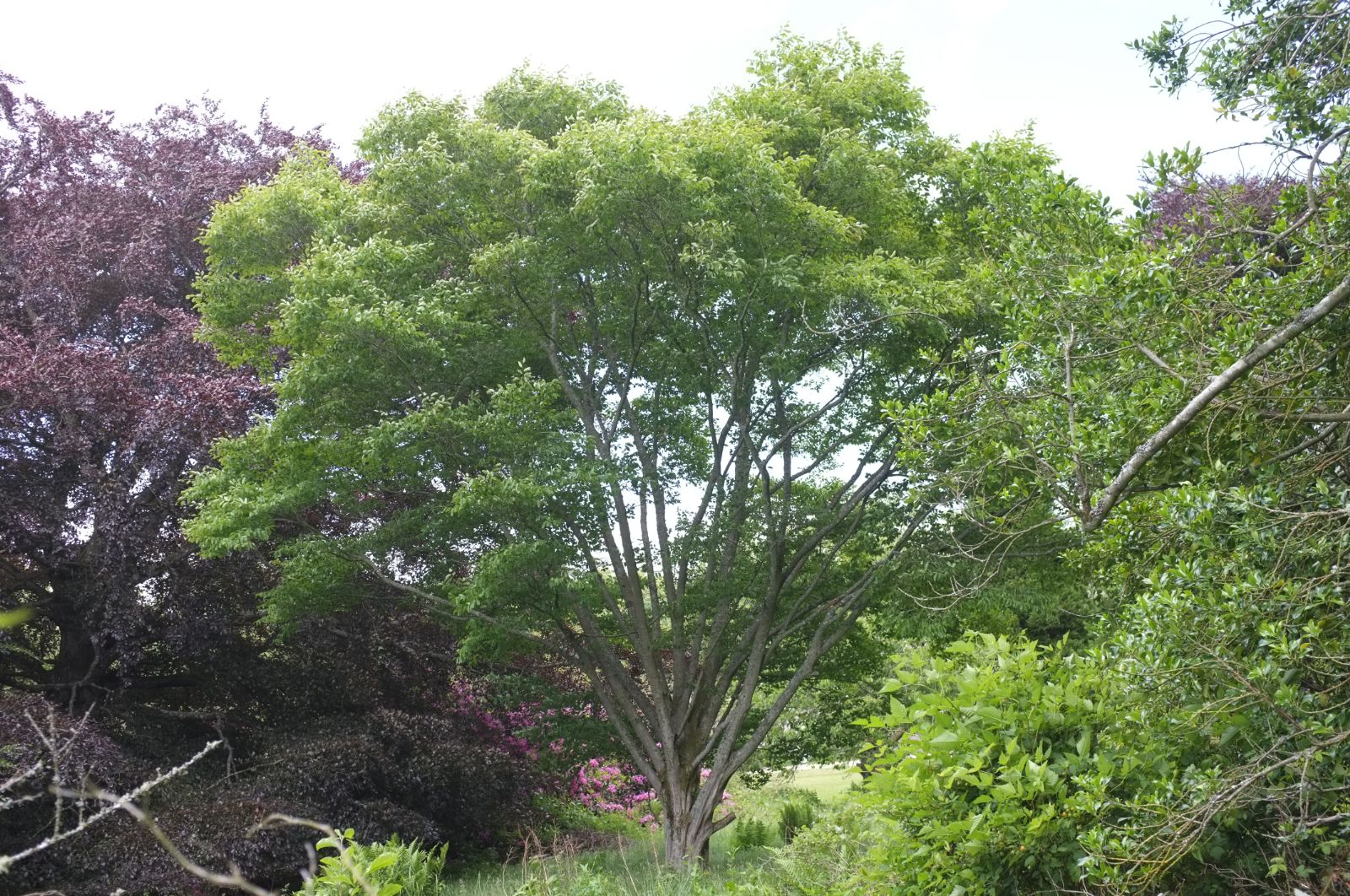Fagus engleriana
Sponsor
Kindly sponsored by
a member of the International Dendrology Society
Credits
John Grimshaw & Tom Christian (2021)
Recommended citation
Grimshaw, J. & Christian, T. (2021), 'Fagus engleriana' from the website Trees and Shrubs Online (treesandshrubsonline.
Tree to 25 m tall, usually multi-stemmed, though populations of single-stemmed trees are known in China (Cao & Peters 1998). Bark pale grey-brown. Shoots glabrous, even when young, becoming glossy brown, with long narrow buds. Leaf 5–9(–11) × 2.5–5 cm, ovate, to elliptic- or oblong-ovate, pale green, glaucescent below, glabrous except for long silky hairs on veins below, lateral veins in 9–14 pairs, base broad-cuneate to rounded or subcordate, margin sinuate but entire, apex shortly acuminate; petiole 0.5–1.5 cm, glabrous. Peduncle 2–7 cm, glabrous. Cupule 1.5–1.8 cm; basal bracts greenish, spathulate, glabrous, veined; apical bracts brownish, filiform, hairy. Nuts slightly exserted, apex with three small wings. Flowering April–May, fruiting August–October (China). (Bean 1981; Huang, Zhang & Zhang 1999).
Distribution China Anhui, northern Guangxi, southern Guizhou, Henan, northwest Hubei, Hunan, Shaanxi, eastern Sichuan, Yunnan, Zhejiang.
Habitat Montane broad-leaved and mixed forest, 1500–2500 m asl.
USDA Hardiness Zone 8b-9a
RHS Hardiness Rating H4
Conservation status Not evaluated (NE)
Taxonomic note We recommend the vernacular name Engler’s Beech to avoid confusion with other Chinese beeches.
For a tree of its moderate size and refined charms Fagus engleriana is seen and planted too infrequently. Its elegance comes from the light branching structure and the daintiness of its leaves, which have been described as ‘sea-green’ on account of their glaucous undersides when young (Johnson & More 2004; Dirr 2009). In autumn they turn to shades in the yellow-bronze range (Dirr 2009, Jacobson 1996). Vase-shaped in youth, later with a rounded outline and spreading branches the shape of F. engleriana has been compared to that of Zelkova serrata (Johnson & More 2004).
It was introduced to the Arnold Arboretum by Wilson from western Hubei in 1907 (W 703), from whence material was distributed to Kew in 1911 (Bean 1981); Wilson’s introduction seems to be the source for almost all trees in cultivation. Two original trees, in good condition, remain in the Arnold Arboretum (Arnold Arboretum 2018). In 2017 a NACPEC team led by Michael Dosmann, Keeper of the Living Collections at the Arnold Arboretum (the post held by Wilson) found F. engleriana again in the Si’er area of northern Sichuan and was able to collect seed. They were also told that the forks between the limbs of the large multistemmed specimens seen were used as hibernating places by Giant Pandas (Dosmann 2018).
F. engleriana grows well throughout western Europe and in many parts of North America, although in cooler locations it may be slow-growing. A particularly fine, round-topped specimen of 11 m (in 2009) grows at Benenden Grange, Kent, planted by the late Collingwood ‘Cherry’ Ingram (Johnson 2015), but the British Champion is a 20 m (69 cm dbh) specimen at Westonbirt planted in 1928 (Tree Register 2019). The European Garden Flora (Cullen et al. (eds) 2011) give F. engleriana a RHS hardiness rating of H3 (USDA 9b–10a) but we believe experience to date shows that this is overly conservative – there is a specimen (erroneously labelled F. japonica var. multivernis) growing in the Stadsträdgården in Karlstad, Sweden, one of several examples growing in areas with particularly cold winters.
F. engleriana is one of several members of the genus with spathulate bracts at the base of the cupule (the others are F. crenata, F. orientalis and F. × taurica) but even sterile specimens should be readily distinguishable from these by the foliage glaucescent beneath. Confusion is more likely between F. engleriana and F. japonica, which are very similar in foliage, but the much smaller cupule of the Japanese species (0.6–0.8 cm long vs 1.5–1.8 cm long) is diagnostic. In the absence of fruits or provenance data, however, separation may not be straighforward: minute scrutiny of the literature suggests some difference in the arrangement of pubescence on the underside of the leaves, but this is so subtle it is likely only useful to those who have met enough examples of both to be able to appreciate it.

